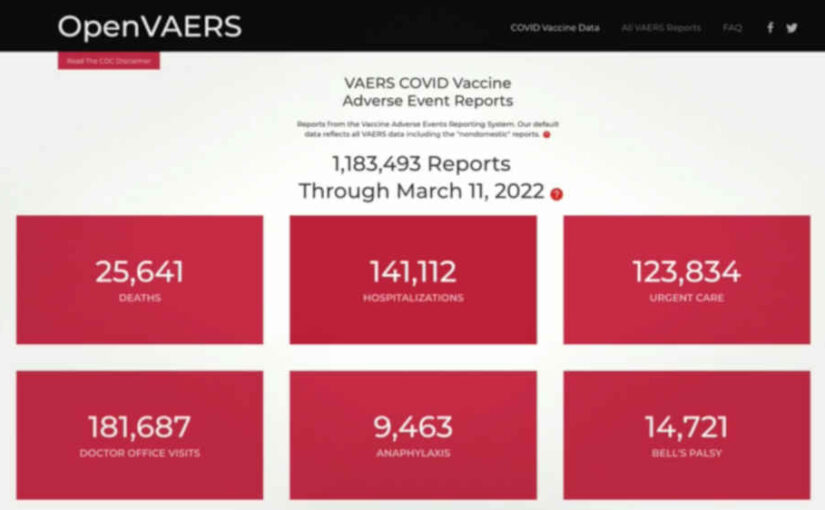Eh, no.
Even if you exclude all of the 82 other types of vaccine and just compare with the flu shot.
Let’s go with the assumption that we have 2.3 times more doses of COVID product doled out than for the flu for the same time period of 462 days. It would make sense then, that the rate of reporting in VAERS (for the same range of adverse events as reported for the flu, ahem) should be about twice for COVID than for flu, non?
…
2. We have 6.2 times as many types of adverse event types reported in the context of the COVID shots
3. We have 117.6 times as many reports of adverse events in the context on the COVID shots.… we certainly do not see the ‘anticipated’ doubling of the reports as we would have expected if the injection to adverse event ratio was proportional for flu and COVID products.
Jessica Rose
She also looks at deaths reported. Assuming an under-reporting factor of 30, it seems the injected could have a 1/1000 chance of death.1That adverse events are under reported is not contested. But there is debate on the true URF. Steve Kirsch says it’s 41. Joel Smalley, using Massachusetts data, suggests a range of 8-41 is possible (see ‘Addendum’). Mathew Crawford says 30. Meanwhile the CDC and FDA, supposedly monitoring vaccine safety signals for years, have not said what they calculate the VAERS URF to be. Nor how others are going wrong in their URF calculations.
- 1That adverse events are under reported is not contested. But there is debate on the true URF. Steve Kirsch says it’s 41. Joel Smalley, using Massachusetts data, suggests a range of 8-41 is possible (see ‘Addendum’). Mathew Crawford says 30. Meanwhile the CDC and FDA, supposedly monitoring vaccine safety signals for years, have not said what they calculate the VAERS URF to be. Nor how others are going wrong in their URF calculations.

